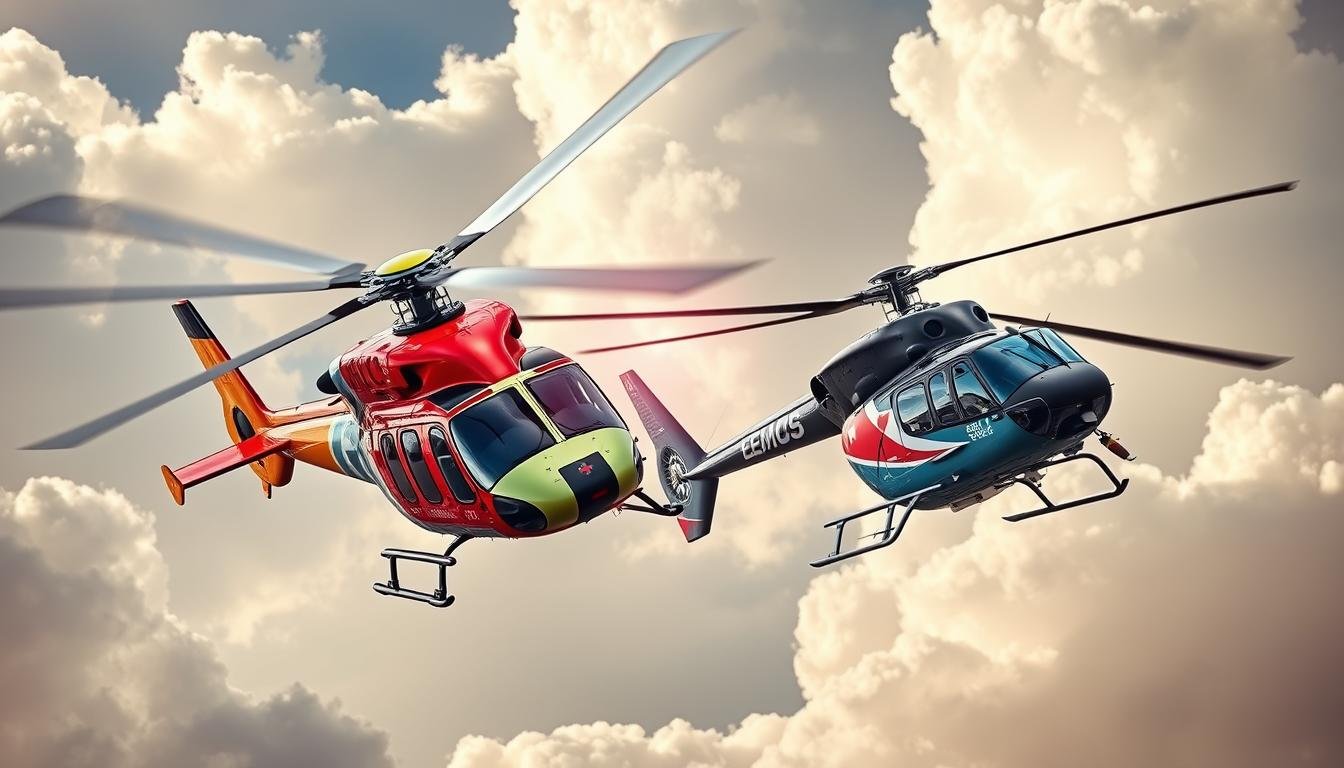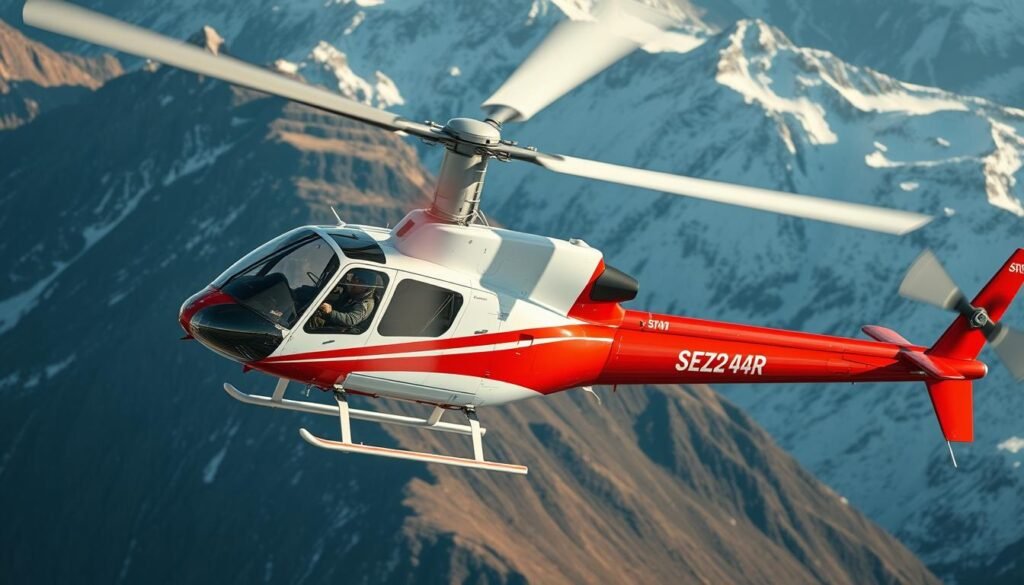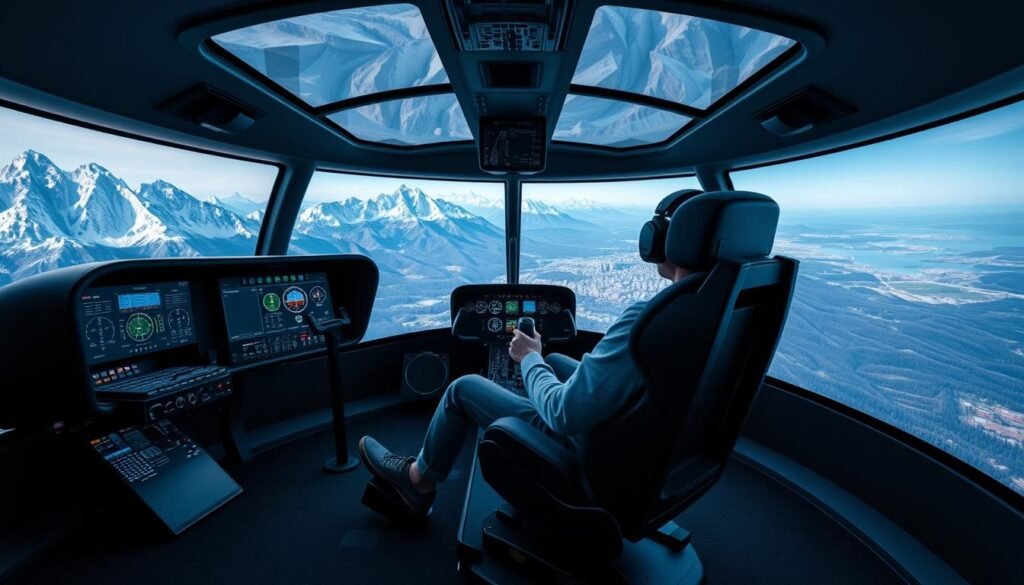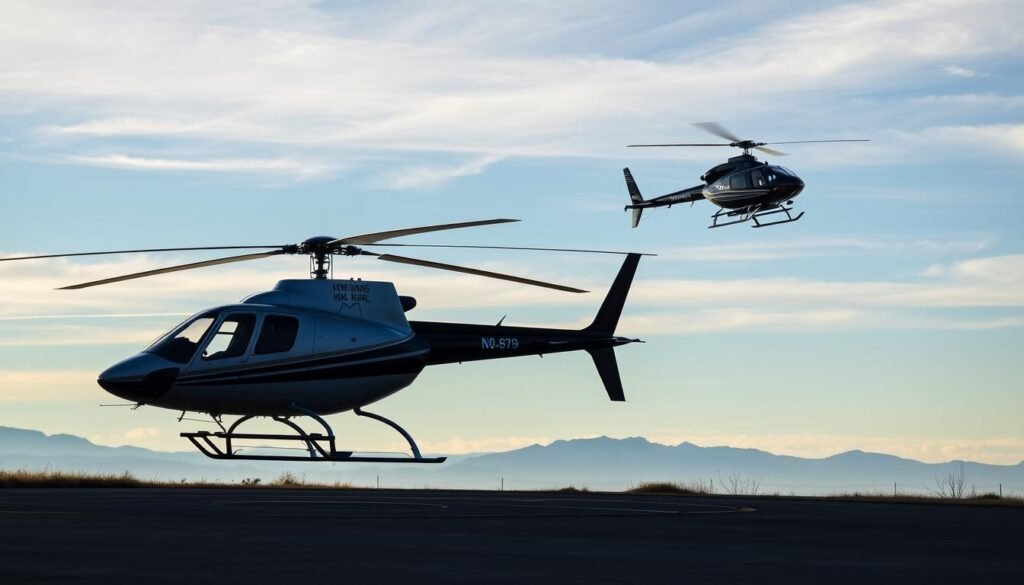This article examines two leading rotorcraft that shape modern emergency medical response. It sets a clear baseline by comparing speed, range, cabin layout, avionics, and operating economics.
The analysis contrasts a newer multi-role model with advanced avionics and a five-blade rotor against a time-tested, rugged design with a four-blade composite rotor. Readers will see how cruise speed and max range affect dispatch times and mission reach.
Practical considerations include cabin access and stretcher handling, maintenance complexity, and per-flight-hour costs that drive long-term budgets. The discussion frames real-world missions like hot-and-high inland ops, over-water medevac, and rooftop urban approaches.
Key Takeaways
- Compare speed and range to understand response-time advantages.
- Balance cabin access and loading options against patient handling needs.
- Factor avionics and automation into low-visibility and night ops.
- Weigh higher operating costs against mission performance gains.
- Match aircraft choice to mission profile, staffing, and training posture.
Overview: Choosing The Right EMS Platform In The United States
Choosing the right rotorcraft platform shapes response time, crew workload, and patient outcomes. Leaders in U.S. hospital programs, regional networks, and public safety units must match platform capability to mission demand. This choice affects how quickly teams reach patients and the level of care they can deliver in transit.
The decision often narrows to a lower-cost utility workhorse versus a higher-performance modern twin. Geographic environment—urban rooftop pads, high-altitude ranges, or coastal corridors—will push operators toward one or the other. Predictable maintenance and parts access keep distributed bases mission-ready.
| Program Type | Typical Cost Band (per hour) | Operational Strength | Primary Tradeoff |
|---|---|---|---|
| Hospital-Based | $2,500–$4,500 | Clinical fit, rapid interfacility transfer | Cost vs. range |
| Regional Air Ambulance | $2,500–$4,500 | Longer range, night ops readiness | Training and maintenance load |
| Public Safety / SAR | $2,500–$4,500 | Rugged utility, multi-mission fit | Crew workload vs avionics capability |
Budget realities translate to mission volume and readiness. A difference of roughly $1,000 per hour can reduce available sorties and affect 24/7 coverage. Pilot proficiency, IFR and NVG training, and AFCS capability must align with staffing models.
Leaders should review dispatch scenarios like highway scene responses, interfacility transfers, and over-water flights. A clear match between platform envelope and program risk environment determines which option best supports safe, reliable services.
Further reading on civilian rotorcraft options is available in this roundup on top models: top civilian helicopters.
Heritage And Purpose: Legacy Bell 412 Versus New-Generation AW139
Two distinct lineages drive mission intent and daily operations. The bell 412 grew from a 1970s platform and keeps a straightforward, robust airframe that crews trust in harsh service.
The newer model emerged in the early 2000s with a clean-sheet goal: higher cruise speed, greater payload range, and integrated avionics for complex missions. Its design favors automation and advanced cockpit workflows.
Heritage shapes philosophy. The bell 412 emphasizes pragmatic, rugged utility across rescue, transport, and military roles around the world. Operators rely on simple systems that ease maintenance and sustain fleet continuity.
The modern platform leans toward mission automation, benefiting crews during high-workload flight profiles and long over-water legs. Both can be fitted for patient care, but their origins influence cabin layout, support needs, and training paths.
| Feature | Legacy Model | New-Generation Model | Operational Impact |
|---|---|---|---|
| Design Origin | Evolution of a proven 1970s airframe | Clean-sheet 2000s multi-role design | Maintenance predictability vs modern capability |
| Primary Roles | Utility, SAR, medical transport | Offshore transport, SAR, VIP, medevac | Wide mission fit across different doctrines |
| Systems & Cockpit | Simpler avionics, lower cockpit automation | Integrated avionics, higher automation | Different pilot workload and training needs |
Readers who want a broader procurement perspective can consult a detailed medical and emergency services guide. This frames how legacy fleets and modern entrants shape program choices today.
Design And Airframe: Semi-Monocoque Versus Composite Crashworthy Structures
Fuselage construction and rotorhead choices shape mission outcomes. One platform uses a conventional semi-monocoque airframe that prioritizes repairability and straightforward inspections. The other employs a crashworthy composite airframe that improves survivability and reduces vibration transfer to the cabin.
Rotor Systems: Four-Blade Semi-Rigid vs Five-Blade Fully Articulated
The semi-rigid, four-blade rotor gives durable, predictable handling and simpler maintenance cycles. Tech teams value its familiar inspection intervals and parts track record.
By contrast, the five-blade, fully articulated rotor smooths ride quality and lowers vibration. That can improve patient comfort and reduce pilot workload during long flight segments.
Landing Gear Choices: Skids And Wheels vs Retractable Wheeled Gear
Landing gear selection affects clearance, ground handling, and cruise drag. Skids or fixed wheels help with rough-field tolerance and quick turnarounds.
Retractable wheeled landing gear trims drag and boosts cruise efficiency. It also changes how crews approach helipad clearance and towing on hospital ramps.
- The semi-monocoque structure favors simple sustainment and damage tolerance in rough fields.
- The composite crashworthy design improves energy absorption and mission survivability.
- Rear clamshell doors alter stretcher geometry and make loading safer compared to side-loading layouts.
- Material and rotor choices influence empty weight and useful load planning measured in lbs and equipment kits.
| Feature | Semi-Monocoque | Composite Crashworthy |
|---|---|---|
| Typical Impact | Lower tech complexity, easy field repair | Higher survivability, lower cabin vibration |
| Empty Weight Effect | Conservative weight; predictable useful load (lbs) | Materials can reduce structural weight, aiding payload (lbs) |
| Landing Gear | Skids or fixed wheels | Retractable wheeled gear |
Design choices tie directly to reliability, inspection cadence, and long-term sustainment. Operators must balance weight limits, crew access, and ride quality when specifying mission equipment for each helicopter.
Performance Head-To-Head: Speed, Range, Ceiling, And Gross Weight
Numbers for cruise, ceiling, and payload translate directly into dispatch options and clinical time saved. This section quantifies how speed and endurance change mission timelines and outlines power margins that matter in hot-and-high environments.
Cruise Speed And Max Range: Time-Critical EMS Response
Cruise speed drives response time. One platform cruises about 165 knots with a max range near 573 nm; the other cruises roughly 122 knots and reaches about 420 nm. That gap cuts minutes from long transfers and reduces en-route refuels.
Service Ceiling And Hot-And-High Capability
Both list a service ceiling near 20,000 feet. Engine output changes the story on hot-and-high departures. Higher shp gives larger power margins and better confined-area climb performance.
Max Takeoff Weight, Payload, And Weight-And-Balance Limits
Max takeoff weight differs: about 15,432 lbs versus 12,200 lbs. That affects usable payload, medical kit fit, crew count, and fuel planning in lbs. Operators must balance mission load and reserves to stay within limits.
Engine Output, Power Margins, And Field Performance
One option delivers roughly 3,358 shp total against about 1,800 shp. That gap improves OEI margins, hover ceiling, and accelerate-stop behavior. Field performance—hover ceilings, turnbacks, and short-LZ ops—shapes pilot go/no-go choices.
- Performance metrics inform dispatch reliability and coverage.
- Range flexibility reduces refuel stops and expands hospital-to-hospital reach on a single duty.
Cabin, Doors, And Patient Access: Stretcher Handling And Crew Workflow
Cabin layout and door design directly shape how medics load patients and work inside tight, time-critical missions. Usable interior volume and clear access routes reduce twisting, speed loading, and preserve crew ergonomics during transfers.
Cabin Volume, Configurations, And Rear Clamshell Doors
The larger cabin provides up to 282 cubic feet of usable space. This extra room supports dual-stretcher setups, neonatal cots, and additional monitoring gear without crowding crews.
Rear clamshell doors align the stretcher with the centerline. That minimizes pivoting and strain, improving patient and crew safety when loading on uneven ground.
Loading In Confined Areas: Ground Access And Safety
Quick-change interiors favor flexibility, but side-loading requires careful choreography. Crews must coordinate movement, radio calls, and stretcher angles to avoid delays.
In tight LZs, approach paths, rotor clearance, and downwash management dictate safe ingress and egress. Night ops add NVG and lighting considerations that affect how medics move around the cabin.
- Electrical provisioning: Strategic outlets and mounting points speed setup of ventilators and monitors.
- Cabin ergonomics: Height, lighting, and noise levels influence tasks such as ventilation management and transfusion setup.
- Infection control: More space and direct access reduce cleaning cycles and speed turnarounds between missions.
For broader comparisons of air ambulance interiors and mission-fit options, see this roundup on top helicopter models used in emergency medical services: top helicopter models used in EMS.
Avionics, IFR, And Night Vision: AFCS, FMS, And NVG Readiness
Integrated avionics and automation shape single-pilot IFR capability and night operations readiness. Redundancy, terrain alerting, and automated flight modes reduce task saturation during time-critical missions. Crews gain confidence from predictive monitoring and reliable comms.
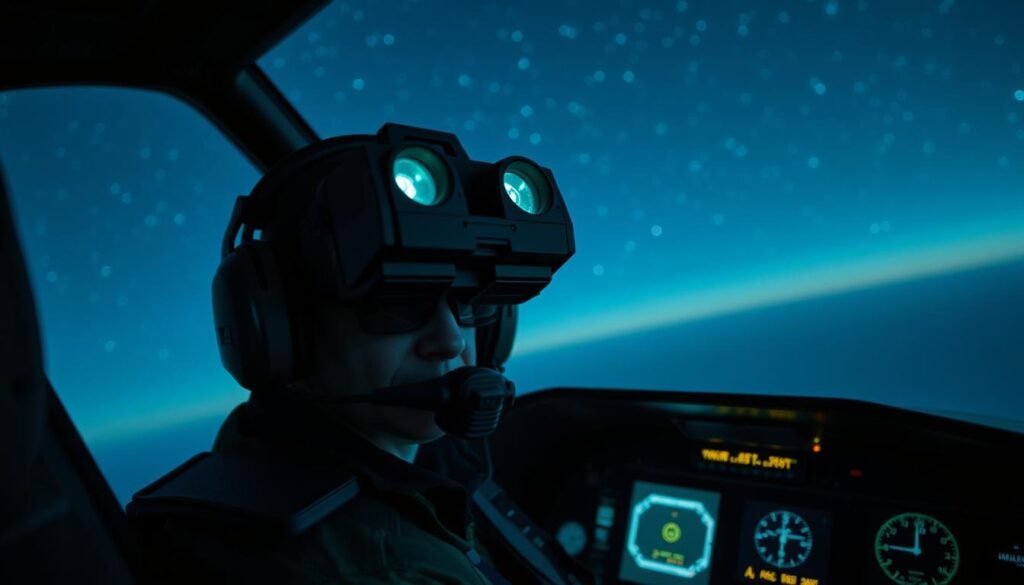
IFR Capability: Dual GPS, Comms/Nav Radios, And Autopilot
Dual GPS redundancy on the newer platform supports dispatch in marginal weather by providing backup navigation for instrument approaches. The legacy configuration offers standard IFR GPS and full comm/nav radios suitable for routine approaches and departures.
Automatic Flight Control Systems And Four-Axis Autopilot Benefits
A four-axis autopilot enables coupled approaches, auto-hover, and smoother missed‑approach transitions. That tier of AFCS meaningfully cuts pilot workload during instrument departures and arrivals and improves control during single-pilot operations.
Night Vision Goggles, Night Searchlight, And Weather Radar
NVG integration and a dedicated night searchlight expand usable hours for scene work. Weather radar and storm-scope aids help crews penetrate or avoid cells while maintaining situational vision at low levels.
- HTAWS terrain alerts assist low-level routing to rooftop pads and confined scenes at night.
- CVR/FDR, HUMS, and engine/vibration monitoring support safety assurance and predictive maintenance.
- Combined avionics and automation permit safer single-pilot IFR flight profiles and reduce diversion risk.
Role And Medical Equipment: Winch, Power, And ICU-Level Capability
Equipment fit, from hoists to power outlets, defines operational reach and in‑flight capability. Crew loadouts determine what care teams can sustain at scene and during transfer. This section summarizes standard rescue gear and medical systems that expand mission scope.
Rescue Winch, Beacon Homer, And Over-Water SAR Integration
Both platforms include a 250 ft cable winch rated to 270 kg with variable speed control. That winch and an integrated beacon homer permit precise hoist operations in confined terrain and over water.
Night searchlight and NVG compatibility pair with hoist controls to enable safe search rescue missions after dark. Radar and IFR avionics integration extend usable envelopes for poor weather work.
Medical Systems: Oxygen, Ventilation, Suction, And Power Outlets
Standard medical kits include oxygen, mechanical ventilation, electric suction, defibrillator, and syringe drivers. These systems are laid out for continuous care and fast access during emergency transfers.
On‑board power differs by fit: higher‑voltage 240V outlets support ICU‑grade devices, while 12V systems limit some equipment choices. Power architecture affects redundancy and equipment mix for long missions in the United States.
Dual Stretcher, Neonatal Transport, And High-Intensity Lighting
Interiors support dual‑stretcher setups and neonatal intensive‑care cot transport with dedicated storage and mounting points. High‑intensity adjustable medical lighting keeps procedures visible without NVG interference.
- Standardized kits reduce variability and speed crew familiarization across bases.
- Role equipment choices widen mission capability and simplify logistics for air ambulance services.
- When paired with avionics, these systems improve safety on night and over‑water search rescue operations.
Operating Costs And Maintenance: Dollars Per Flight Hour And Support
Budgeting hinges on clear per flight hour figures and reliable sustainment plans. Operators need concise, actionable numbers to align finance, maintenance, and mission planning.
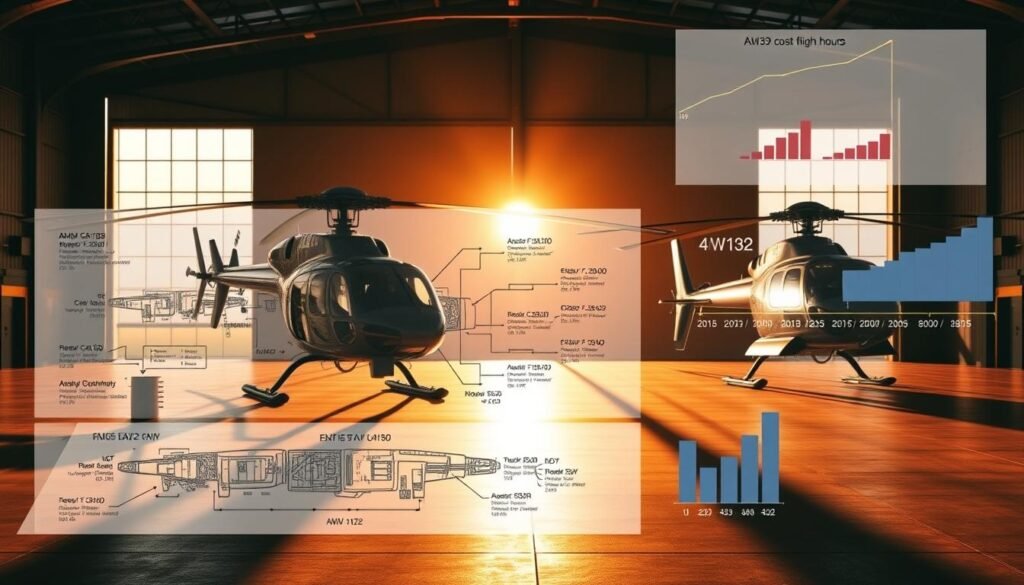
Per Flight Hour Costs: Budgeting For EMS Services
Typical bands show about $2,500–$3,000 per hour for the legacy utility and roughly $3,500–$4,500 per hour for the modern twin. Even a $1,000 gap compounds fast at common utilization rates, increasing annual spend on fuel, maintenance, and crew.
Maintenance Complexity, Parts Availability, And Technician Training
The simpler systems of the legacy type reduce diagnostic time and support broad technician pipelines. In contrast, advanced avionics and newer airframe systems demand specialized tooling and deeper training.
Uptime, Reliability, And Field Support For Utility Missions
Parts ecosystem maturity shortens AOG time and boosts readiness. Predictive HUMS and strict scheduled inspections cut unscheduled downtime and help managers forecast spares and labor needs.
- Weight growth from mission kits raises wear on brakes and tires, and can shorten inspection intervals.
- Strong management practices—tracking utilization, inspections, and spares—sustain mission-ready fleets.
Pilot And Crew Considerations: Training, IFR Proficiency, And Workload
Crew proficiency, not equipment alone, sets the margin between a routine transfer and a high‑risk sortie. Short, focused training and clear procedures keep teams effective under pressure. Programs should prioritize recurrent scenarios that reflect real missions.
Single-Pilot IFR, Crew Coordination, And Communication Management
Single‑pilot IFR is common and demands disciplined task sharing. Pilots must use AFCS and automation to reduce manual workload during instrument departures and approaches.
Crews need crisp communications: checklists, callouts, and role assignments help maintain situational awareness. NVG and approach briefings cut task saturation in night ops.
Decision-Making: Go/No-Go, Duty Day, And Fuel Management
Decision models must be simple and repeatable. Crews should make sure weather trends, alternates, and duty‑day limits are part of every launch brief.
Fuel and weight planning belong to preflight checks and contingency planning. Recurrent training scenarios should include hot‑and‑high departures, confined LZs, and en‑route patient deterioration.
- Training: IFR currency, NVG proficiency, AFCS use.
- Human factors: briefings, automation management, and fatigue management.
- Decision support: standardized go/no‑go flow and documented safety checks — see the safety investigation linked here: safety investigation.
Mission Profiles: Urban, Rural, Hot-And-High, And Over Water
Operational envelopes vary: rooftop pickups, dusty fields, high-altitude passes, and long over-water flights each demand different tradeoffs.
Offshore And Long-Range Tasking
The modern twin is widely adopted in oil support and coast guard search rescue roles because speed and range extend coverage radius far offshore. Long legs over water require robust fuel planning, hoist readiness, and clear crew communications.
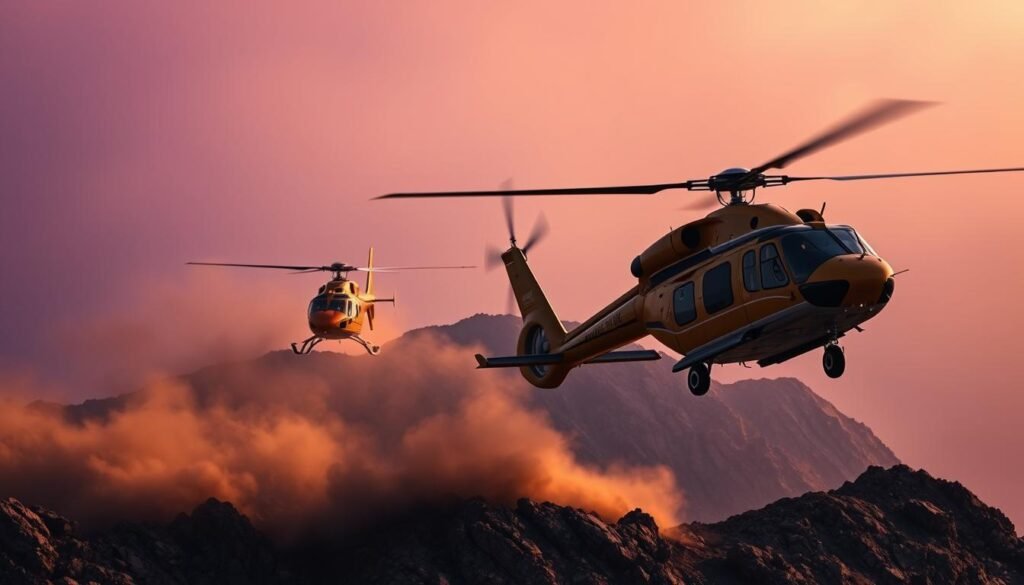
Air Ambulance Operations In High-Density Altitude Environments
In hot-and-high environments, operators favor platforms with predictable power margins and steady handling. That reliability helps in climb performance and confined-area work.
Weight planning becomes critical. Extra patient gear, fuel, and crew load can erode performance, so teams must preserve safety buffers before launch.
Offshore Oil And Gas, SAR, And Long-Range Over-Water Flights
Offshore support and SAR missions need speed, endurance, and robust systems for long flights. Crews stage with extra reserves and brief diversion options while coordinating with ground rescue units.
Rural and remote field ops add dusty or snowy LZ challenges. Advanced avionics and HTAWS help with low-level routing at night and improve margins during confined approaches.
- Urban rooftop: strict approach paths, rotorwash control, and close ground coordination reduce risk.
- Rural field: quick LZ assessments, debris control, and simple loading workflows matter.
- Search rescue over water: hoist profiles, comms discipline, and reserve fuel determine mission success.
Safety Systems And Data: Terrain Warning, FDR/CVR, And HUMS
Integrated warning systems and usage monitoring have become core enablers of predictable, safe operations in low‑visibility conditions. Modern fleets commonly field HTAWS, weather radar, CVR/FDR, and HUMS paired with engine and airframe vibration sensors.
HTAWS, Weather Awareness, And Risk Mitigation At Night
HTAWS and weather radar reduce CFIT risk by giving pilots real‑time terrain and hazard cues during night approaches and marginal weather. When combined with disciplined NVG procedures, these systems add layers of situational awareness for low‑level routing and confined‑area work.
Health And Usage Monitoring For Airframe And Engines
HUMS and vibration monitoring create trend data that maintenance teams use to schedule work before failures occur. FDR and CVR records also feed safety culture by enabling focused debriefs and training after complex missions.
| System | Primary Benefit | Operational Effect |
|---|---|---|
| HTAWS + Weather Radar | Terrain and hazard alerts | Lower CFIT risk at night, safer routing |
| CVR / FDR | Event playback and analysis | Improved training and incident review |
| HUMS / Vibration Monitoring | Trend-based maintenance | Fewer unscheduled removals, higher dispatch predictability |
Data-driven maintenance keeps helicopters mission‑ready and reduces unscheduled downtime. For more on mission equipment and fit, see this guide on medical transport models: medical transport helicopters.
AW139 vs Bell 412: Best Aircraft For EMS Helicopter Pilots
This section synthesizes mission tradeoffs crews face every day. One platform brings higher cruise speed, longer range, advanced avionics, and a larger cabin with clamshell doors. The other delivers lower operating cost, simpler maintenance, and dependable hot‑and‑high performance.
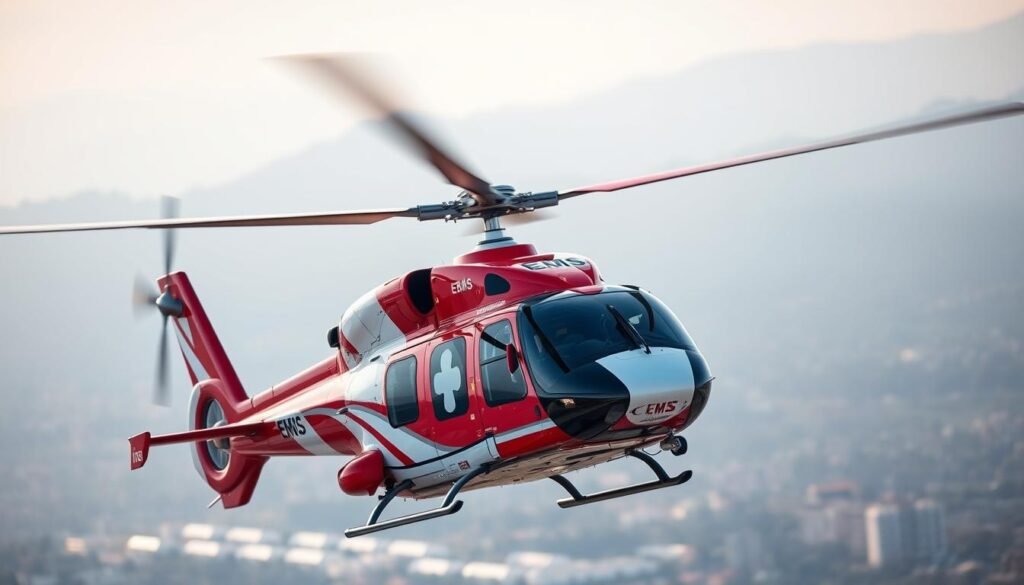
Operational teams must weigh speed and automation against rugged simplicity. That choice affects cockpit workload, patient handling, and how quickly teams reach a scene.
Clinical access and usable cabin space change how medics work. At the same time, sustainment and training needs shape availability and long‑term budgets.
- Speed and performance: Faster cruise shortens mission time and expands coverage.
- Reliability and cost: Simpler systems lower maintenance hours and training burden.
- Mission flexibility: Useful load and weight planning determine dual‑stretcher or extended‑range fits.
| Tradeoff | Higher‑Speed Option | Lower‑Cost Option | Operational Effect |
|---|---|---|---|
| Cabin & Access | Larger cabin, clamshell doors | Proven layout, simpler fittings | Faster loading vs easier field repair |
| Systems | Advanced avionics, automation | Basic avionics, easy troubleshooting | Lower pilot workload vs lower maintenance |
| Cost & Sustainment | Higher hourly cost, wider reach | Lower hourly cost, predictable uptime | Expanded coverage vs budget predictability |
Program directors should use a simple decision matrix that maps mission mix, geography, staffing, and finances to the best fleet split. This creates a practical balance between capability and sustainment.
Operator Adoption And Real-World Use: From CHC To State Services
Fleet scale and accumulated hours reveal which models have moved from trial fleets into mainstream service. Global adoption metrics help program managers assess risk and supportability.
Global Fleet Maturity And Flight Hour Milestones
One rotary type has recorded more than 1,250 orders and serves over 290 operators across 80+ countries. That footprint signals a mature spare-parts network and trained technician base.
CHC’s mixed fleet includes that type and others; its AW139 fleet alone has logged over 250,000 flight hours. These cumulative hours show sustained operational use in offshore oil and SAR roles.
New Deliveries And Capability Upgrades In 2024-2025
Recent deliveries continue to refresh regional fleets. On 10/30/2024, a first delivery to Western Australia’s DFES began replacing older models, with officials citing improved mission systems and higher performance.
Procurements in 2024–2025 emphasize upgraded avionics, extended-range tanks, and mission-specific kits. State and regional buys reflect multi-year budgets and service-level agreements that shape sustainment planning.
| Metric | Value | Operational Impact |
|---|---|---|
| Orders | 1,250+ | Large production base reduces lead times |
| Operators | 290+ | Wide global support network |
| Cumulative Hours (CHC) | 250,000 flight hour | Proven long-term reliability in offshore roles |
| 2024 Deliveries | State fleet replacements | Upgrade to modern mission systems |
Adoption trends point to lower program risk through parts availability and ecosystem strength. For operators in the United States, these signals matter when matching mission profile, sustainment budgets, and training pipelines.
Field Insights: What EMS Pilots Value In Platforms And Performance
Front-line pilots often judge platforms by how they perform when timelines are tight and conditions are unforgiving.

Flexibility, Capability, And Balance Under Real EMS Timelines
Pilot feedback repeatedly points to reliable hot-and-high performance, intuitive avionics, and cabin access that shortens time on scene.
They also highlight the need to make sure equipment is organized so critical tools are at hand during rushed loading and treatment.
- Flexible cabin configurations and standardized layouts speed patient handling and reduce error.
- Recurrent training keeps IFR and NVG skills sharp and improves automation management.
- Transparent comms with medical crews and dispatch help crews anticipate patient needs and adjust routing in flight.
- Pilots value a practical balance between speed, endurance, and operating simplicity over any single spec.
| Pilot Priority | Operational Effect | Actionable Measure |
|---|---|---|
| Power Margins & Visibility | Higher confidence in confined and hot-and-high departures | Set clear go/no-go and performance briefings |
| Cabin Access & Layout | Faster loading, better patient care | Standardize mounting and outlet placement |
| Automation & Training | Lower workload on single‑pilot flights | Recurrent scenarios for AFCS and NVG use |
In short, flight crews favor platforms that offer flexibility and an operational balance they can rely on in the field. Those traits shape safe, repeatable mission outcomes and influence fleet choices across services operating helicopters in the United States.
Environmental And Landing Zone Considerations: Ground, Field, And Water
Scene responses demand precise landing zone checks that factor in debris, slope, and nearby obstacles. Crews should run a short, standardized LZ brief on approach to confirm debris, vegetation, and overhead wires. This reduces surprises and improves safety during high‑workload launches.
Rotor disk and tail clearance matter in confined fields. Teams must map rotor clearance to the airframe footprint and choose landing techniques that keep the tailboom and tail rotor clear of hazards.
Approach profiles should include power checks and a clear go‑around call at a set decision height. Crews often set that call a few feet above ground to avoid settling with power or brownout during a hover.
- Ground risks: debris, slope, wires — mitigate with marking, lights, and a brief for night ops.
- Environmental stressors: heat, cold, and precipitation change hover performance and weight planning.
- Coordination: use hand signals, vehicle positioning, and lighting plans to manage rotorwash during patient transfers.
Pilot tools such as HTAWS, NVG, and radar altimeters sustain situational awareness in marginal visibility and tighten safety margins on every flight.
Bell 412 Strengths And Limitations For EMS Services
When budgets are tight and operations run in hot, high, or rugged environments, crews often choose a platform with proven reliability and low sustainment burden.
Rugged Reliability, Lower Operating Costs, And Utility Balance
The bell 412 brings a clear value proposition: dependable systems, wide parts availability, and modest operating costs of roughly $2,500–$3,000 per hour.
Its utility pedigree means field teams can repair and return aircraft quickly. That boosts uptime and reduces training overhead for technicians.
Speed, Cabin Size, And Older Design Constraints
The platform cruises slower and has a smaller usable cabin. Without rear clamshell doors, stretcher loading can take longer in tight scenes.
Weight planning is critical: crew must balance equipment kits, fuel, and patient loads against published gross weight and performance limits.
“Operators value predictable performance in harsh conditions more than marginal gains in cruise speed.”
- Lower acquisition and sustainment burden supports constrained EMS budgets.
- Smaller payload and cabin affect turn times and gear carriage.
- Careful weight (lbs) and balance work preserves safety margins.
AW139 Advantages And Tradeoffs For EMS Services
A modern twin delivers measurable mission reach and cockpit automation that change how teams plan long transfers. This platform typically cruises near 165 knots and reaches about 573 nm, which shortens response times and expands coverage for regional networks.
Speed, Range, Helionics, And Cabin Access Superiority
Higher speed and range translate to fewer refuels and faster patient delivery to definitive care. The four-axis autopilot and integrated FMS reduce pilot workload on IFR and night flight profiles.
The crashworthy composite fuselage and rear clamshell doors improve stretcher access. Crews report quicker loading, safer transfers, and steadier cabin conditions that benefit critical care continuity.
Acquisition Cost, Maintenance Complexity, And Crew Training
These gains come with higher acquisition and sustainment demand. Typical operating costs run roughly $3,500–$4,500 per hour and require deeper technician skillsets and specialized tooling.
Programs should build a focused training curriculum that covers automation management, AFCS use, and advanced avionics troubleshooting. When budgets permit, the added capability supports over‑water SAR, NVG ops, and expanded mission sets.
| Area | Advantage | Tradeoff |
|---|---|---|
| Performance | Higher speed & range | Higher operating burden |
| Cabin | Clamshell doors, larger space | Higher acquisition cost |
| Systems | Advanced automation | More complex maintenance |
Conclusion
, A clear alignment between mission goals and platform capability protects patient outcomes and flight safety. Decision makers should view this article as a framework to match capability to mission demand across geography, staffing, and budgets.
The modern twin brings clear gains in speed, range, avionics, and cabin access that improve responsiveness on complex or over‑water tasks. The legacy utility remains valuable where lower hourly cost, maintenance simplicity, and hot‑and‑high reliability matter most.
Leaders must make sure training, SOPs, and maintenance support scale to the chosen solution’s complexity. When paired with disciplined program management, either helicopter can deliver excellent ems outcomes and sustain safe, reliable flight operations.
